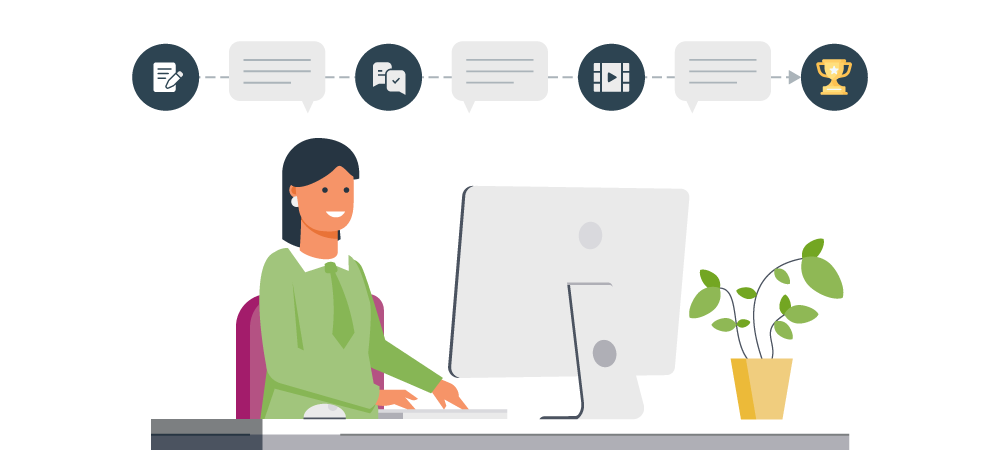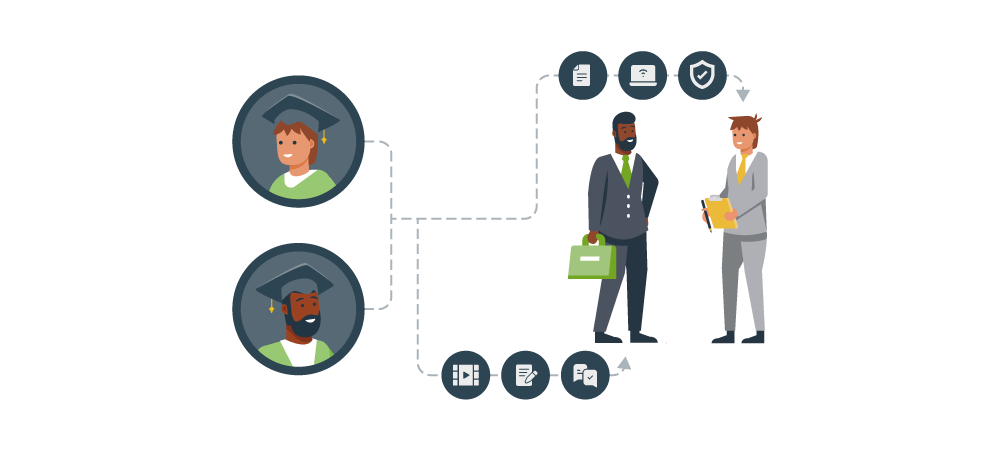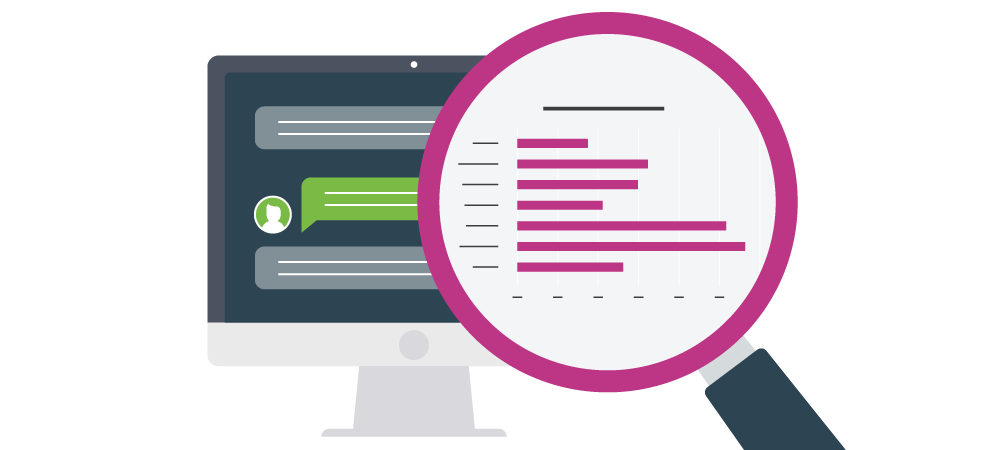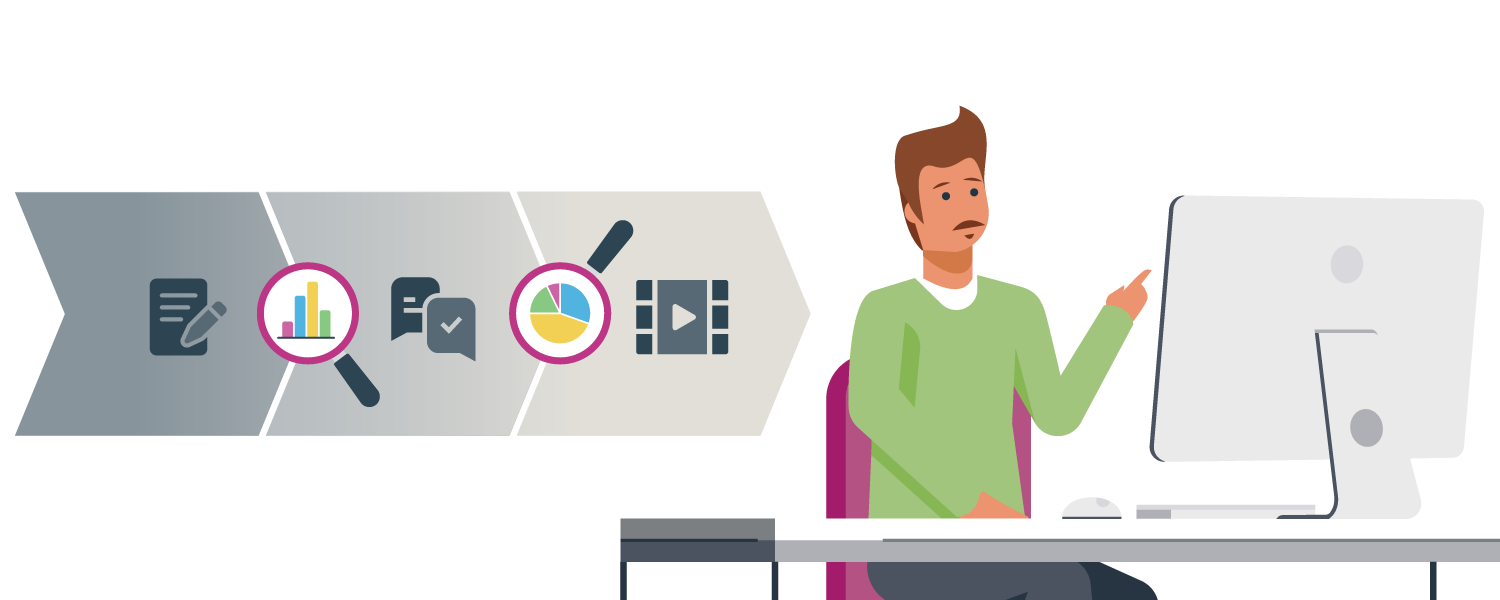In 2018 Josh Bersin hailed the arrival of “learning in the flow of work” as “a new paradigm for corporate training”[1]. For most of us it felt like a bit of a “Yeah duh?” moment. It was a shift most of us had been working towards for many years, to get learning out of the classroom and off the LMS to where it was really needed. However, the brilliant simplicity of the expression “learning in the flow of work” allowed us to explain to our organisations, and our customers, that as learning and development professionals we really are here to help deliver business outcomes and that we are part of the core business team. Such is the power of words.
There is a parallel analogy here for how we as learning professionals use data. In the same way that we put learning into the flow of work we also need to start putting “data into the flow of learning”.
We seem to have gotten off to a false start with data in seeing it predominantly as a way to measure eLearning results rather than a way to drive more effective learning experiences in real time. Don’t get me wrong, evaluating learning through data is very important, but if the evaluation is disconnected to the learning experience, it can be seen as detached, separate entity, or even self-serving, as something learning designers use to evaluate our work and pad our award submissions.
One way to ensure that data is part of shaping the learning experience as much as evaluating it is to include data in the flow of learning. Here are four ways that data can be incorporated into the learning journey to maximise real-time impact.

Maintain engagement through personal goal measurement
Keeping learners engaged and motivated throughout the learning experience is a perennial challenge, particularly with self-paced eLearning. Interactive data like leaderboards and progress bars have been used to provide extrinsic motivation for learners for a long time. But imagine a learning experience where a learner’s progress is not measured by how many pages they have completed or how many colleagues they have beaten, but by the progress towards their own personal learning goals. Integrating data into the flow of learning makes it possible to tap into the more intrinsic motivations of learners and find new and better ways to measure learner progress.

Scaffold the learning journey with data playback
The simple technique of supporting learners to complete more complex learning tasks in smaller steps is one of the most common instructional techniques. The use of self-generated learner data offers the opportunity to do this in a meaningful way. Asking learners to respond to a specific task or questions within a digital content experience, then playing back data from their response to them is a very effective way to scaffold the experience at scale. An example of this is breaking down a project, such as a change management plan, into smaller tasks that are spread throughout the learning journey and then automatically collating that into a final artefact for the learner. Another example in eLearning is presenting previous responses or inputs from the learning back to them as a stimulus to prompt another questions or activity. Both these approaches use the playing back of data to help build or scaffold the learner’s understanding. It also vastly increases learning completion rates as the learner feels supported and is not presented with a complex task at the end of a learning journey. These are not new learning concepts but using data cleverly makes the learning experience flow smoothly.

Personalise the learning experience with adaptive pathways
eLearning can be very impersonal, but with the intelligent use of data it doesn’t have to be. Techniques like branching is one way of making learning journeys more personal, but while this is a powerful tool, it is also a very complex one. Adaptive learning platforms offer far more effective and scalable ways of delivering personalised learning as they allow you to build up a more holistic view of the learner’s needs and capabilities using larger data sets to personalise their learning journey. Using data collected from diganistics, self-assessments, job role definitions, previous learning results and coaching sessions you can deliver highly personalised journeys in an individualised context. However, to make this manageable and scalable careful planning is required, such as mapping these data sets and your learning experiences to an overall capability matrix.

Empower learning relationships with conversation dashboards
Learning is as much personal as it is social. When we think of social learning in the digital context we usually think of techniques like discussion boards and chat forums. While they have their place, data can be used to support a far more effective social interaction — a conversation. The problem is that in large scale learning initiatives that include coaches, mentors and facilitators, the conversations between the various supporting structures and the learner is not tracked in a way that promotes scaffolded support and development of the learner. By collecting data on conversations, for example via individual conversation dashboards as a replacement for coaching or manager guides, conversations can be captured in a way that allows for mapping of learner capability gaps, as well as the setting and tracking of goals and intended workplace learning actions.
Ultimately to make full use of the power of data in learning we need to shift our mind set from that of analysing tracking and response data to design data into the learning experience. Ask yourself “How will I use data in the flow of learning today?”
This article originally appeared in Training & Development magazine, September 2021 Vol. 48 No. 3, published by the Australian Institute of Training and Development.
[1] Bersin, Josh. “A New Paradigm For Corporate Training: Learning In The Flow of Work”. Josh Bersin (blog). https://joshbersin.com/2018/06/a-new-paradigm-for-corporate-training-learning-in-the-flow-of-work/

.png)

